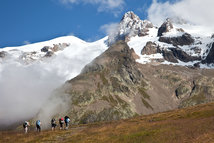Natural and rural areas
Overview
Areas under pressure or experiencing population loss
Depending on their geographical situation, there is at one extreme an abandonment of the most isolated cross-border rural spaces areas (a large proportion of the Franco-Spanish border), while conversely at the other extreme some rural spaces areas are under pressure from urban territories, sometimes located on the other side of the border (examples of the Franco-Belgian and Franco-Luxembourgish borders, and part of the Franco-German and Franco-Swiss borders).
The presence of the border has long conferred a “cul de sac” status to a number of these spaces, at the periphery of the national space and therefore outside of national priorities for facilities, without the critical mass required to achieve a certain visibility. The geographical isolation of some of these areas, far removed from large communication infrastructures along with the limited presence of public services and the small number of jobs all conspire to hinder growth of the working age population. In France, the “Maisons au service du public” have been created to respond to the needs of citizens too far away from public facilities, notably in rural and peri-urban zones.
Nevertheless, these rural and natural cross-border spaces areas can constitute real breathing space for the urban cross-border spaces areas weighing on them: various cross-border traffic flows, peri-urbanisation through the residential settlement by neighbouring urban populations, intensive tourism activities. Actions intended to control this sprawling of neighbouring conurbations is all the more difficult when urban centres are situated on the other side of the border (for example: the French departments of Ain and Haute-Savoie with Geneva (FR-CH), the Haut-Rhin department with Basel (FR-CH), and Lower Austria with Bratislava (AUAT/SK), etc.).


